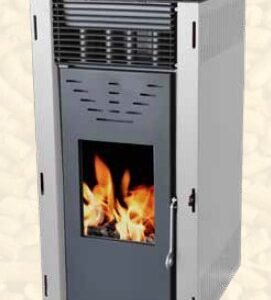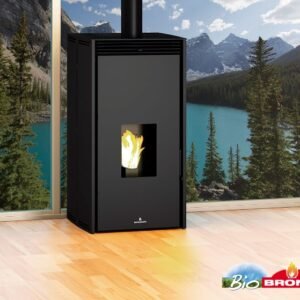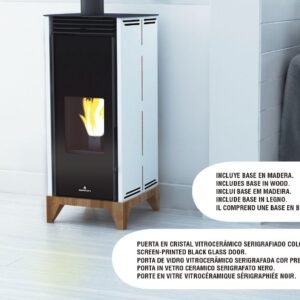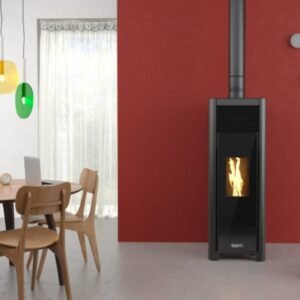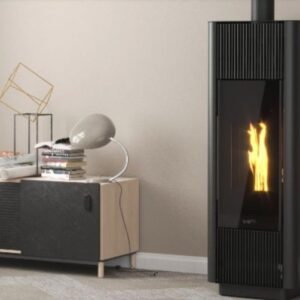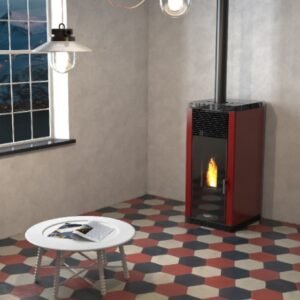Non-Electric Pellet Stoves
Non-electric pellet stoves, as the name suggests, are stoves that use pellets as fuel and DO NOT require electricity to operate.
The fact that they do not use electricity makes these pellet stoves particularly suitable for those who want to lower their electricity bills or simply seek a solution capable of providing heat even during a blackout.
Below, you can find our selection of non-electric pellet stoves available for direct online purchase. The brands we offer include the Italian Laminox and the Spanish Bronpi and Eider Biomasa, which represent simpler and more affordable alternatives.
Showing all 10 resultsSorted by price: low to high
How Does a Non-Electric Pellet Stove Work?
Non-electric pellet stoves work similarly to traditional wood stoves by distributing heat through natural convection.
Ignition is manual using a fire starter. Unlike wood stoves that require manual reloading, the draft is natural; thanks to gravity, the pellets in the hopper fall into the brazier, continuously feeding the "flame."
As you can guess, since they distribute heat through natural convection, non-electric pellet stoves do not have a fan, making them quieter and less energy-consuming.
How Do You Light a Non-Electric Pellet Stove?
The ignition of non-electric pellet stoves is the same as traditional wood stoves.
As mentioned earlier, non-electric pellet stoves are manually lit using a fire starter.
In other words, you insert a classic firelighter along with the pellets into the brazier and ignite the firelighter to start the pellet combustion.
Advantages of a Non-Electric Pellet Stove
Non-electric pellet stoves offer numerous advantages, ranging from greater convenience to reduced environmental impact.
Lower Consumption
Thanks to their innovative design, these stoves distribute heat evenly and continuously, ensuring a warm and welcoming environment with significant energy savings.
Ease of Use and Maintenance
Non-electric pellet stoves do not use electrical components that can break, eliminating the risk of malfunctions and the cost of replacing such parts.
Their operation is very simple, akin to traditional wood stoves. There is no need to learn programming to turn the stove on/off.
Energy Independence
Operating without electricity, these pellet stoves ensure heating comfort even during power outages.
They are, therefore, an ideal solution for those living in areas with frequent power interruptions or anyone seeking an efficient and cost-effective heating system.
Eco-Friendly
By functioning without electricity and using pellets—a fuel derived from wood processing waste—these non-electric pellet stoves help reduce greenhouse gas emissions compared to fossil fuels, supporting a greener lifestyle.
Disadvantages of a Non-Electric Pellet Stove
Non-electric pellet stoves have only one disadvantage compared to traditional pellet stoves: It is not possible to program automatic on/off schedules.
Does It Make Sense to Buy a Non-Electric Pellet Stove?
The answer is yes if you don't need a stove that automatically turns on and off at set times.
As you've read, compared to traditional pellet stoves, non-electric pellet stoves offer ease of use, low maintenance costs, lower consumption, energy independence, and eco-friendliness.
In short, they provide many of the advantages of traditional wood stoves, combined with the benefits of pellet fuel.
Pellets are easier to store and do not require treatments such as drying, unlike a pallet of wood which, even if sold as dry, often needs to be exposed to the sun because it is still damp.

